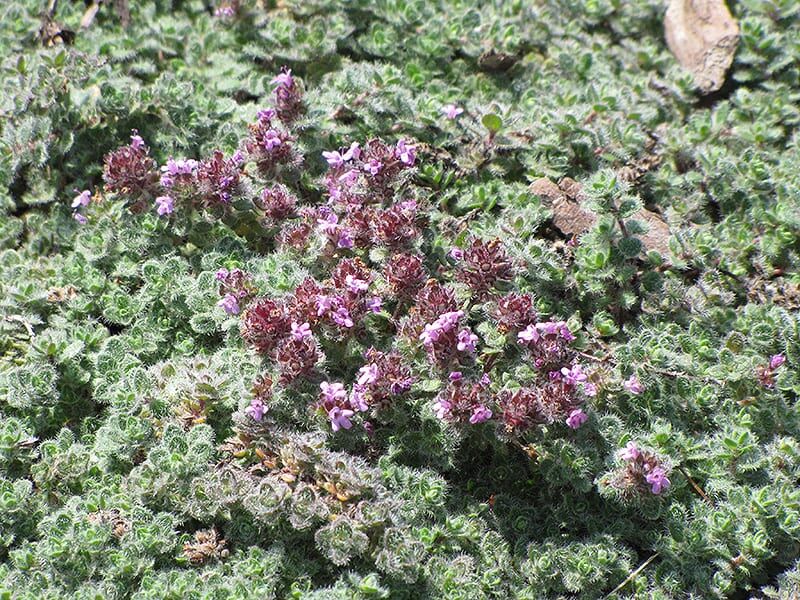Images provided by NetPS Plant Finder Tool
Wooly Thyme
Please contact your local store for product availability.
Find a garden center near you.
Species: pseudolanuginosis
Plant Height: 2 in.
Spread: 24 in.
Evergreen: Yes
Plant Form: spreading
Summer Foliage Color: olive
Minimum Sunlight: full sun
Maximum Sunlight: full sun
Wooly Thyme is smothered in stunning shell pink flowers at the ends of the stems from early to mid summer. Its attractive tiny tomentose round leaves remain olive green in color throughout the year. The fruit is not ornamentally significant.
Wooly Thyme is a dense herbaceous evergreen perennial with a ground-hugging habit of growth. It brings an extremely fine and delicate texture to the garden composition and should be used to full effect.This plant will require occasional maintenance and upkeep, and is best cleaned up in early spring before it resumes active growth for the season. Deer don't particularly care for this plant and will usually leave it alone in favor of tastier treats. Gardeners should be aware of the following characteristic(s) that may warrant special consideration;SpreadingWooly Thyme is recommended for the following landscape applications;Rock/Alpine Gardens, Border Edging, General Garden Use, Groundcover, Herb Gardens
Wooly Thyme will grow to be only 2 inches tall at maturity extending to 3 inches tall with the flowers, with a spread of 24 inches. When grown in masses or used as a bedding plant, individual plants should be spaced approximately 20 inches apart. Its foliage tends to remain low and dense right to the ground. It grows at a fast rate, and under ideal conditions can be expected to live for approximately 10 years.This plant should only be grown in full sunlight. It prefers to grow in average to dry locations, and dislikes excessive moisture. It is considered to be drought-tolerant, and thus makes an ideal choice for a low-water garden or xeriscape application. It is not particular as to soil type or pH. It is highly tolerant of urban pollution and will even thrive in inner city environments. Consider covering it with a thick layer of mulch in winter to protect it in exposed locations or colder microclimates. This species is not originally from North America. It can be propagated by division.
